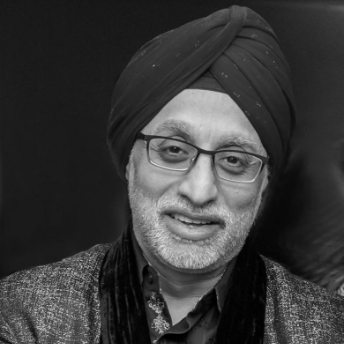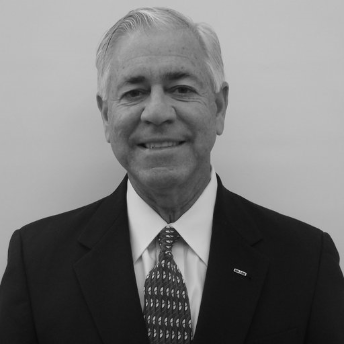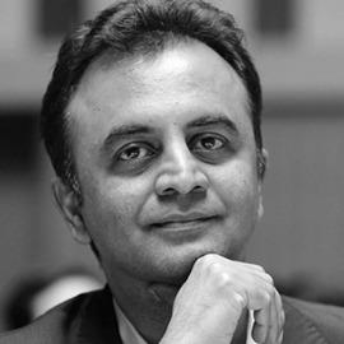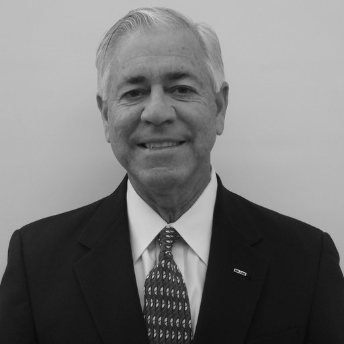Surviving Sepsis – The AI way
Zasti

Zasti


Morten has more than 20 years of experience in alternative investments across venture capital and private equity. During his career Morten has worked out of Copenhagen, Luxembourg, Abu Dhabi, Dubai and Zug, and executed transactions in Europe, US, Asia, Middle East and Africa.
Today Morten is the owner of Sikhoya & Company, a Swiss based investment and advisory firm focused on secondary transactions and other special situation investments within private markets.
Prior to that Morten was a Senior Vice President at Abu Dhabi Investment Company responsible for a global primary, secondary and co-investment program in private equity and real estate. Earlier Morten was four years at the European Investment Fund in Luxembourg after beginning his career at Vaekstfonden, a Sovereign Wealth Fund in Denmark.
Morten holds a Master of Science in Finance from Copenhagen Business School.

Dr. Cook is a Fellow of the American College of Surgeons with more than four decades of practice as a general and vascular surgeon. He holds certifications from the American Board of Surgery and the American Board of Preventive Medicine in the Undersea and Hyperbaric Medicine subspecialty. During his clinical years, he served as Chairman of the Department of Surgery, President of the Medical Staff and on a hospital’s Board of Trustees. While serving as Chairman, Education Committee for the Wound Healing Society and as the Chair, Physician Exam Committee for the American Board of Wound Management he developed examination criteria to establish standards for wound management and uses of hyperbaric oxygen for treatment. Dr. Cook also served as the medical director of the Jackson Wound Hyperbaric Medicine Center, and as Zone Medical Director for Healogics, Inc., the largest wound care provider in the country.

Dr. Jim Logan, board certified in Aerospace Medicine, held numerous positions at NASA including Chief of Flight Medicine and Chief of Medical Operations. Mission Control certified, he served twenty-five Space Shuttle flights and as the project manager for the Space Station Medical Facility where his team developed the initial design for a telemedicine-based in-flight medical care delivery system for long duration flights. He also served as a President of the Aerospace Medical Association, Space Medicine Branch. As a founding board member of the American Telemedicine Association, Dr. Logan served as a resource for professional organizations and medical institutions and as the Telemedicine Clinical Director for the Department of Defense Pacific Regional Program Office at Tripler Army Medical Center in Honolulu. Jim retired from a distinguished career with NASA in 2012 and recently co-founded the non profit Space Enterprise Institute (SEI), whose mission is to educate public, private and governmental entities on human activity in space.

Chief Medical Officer (CMO)
Leads healthcare initiatives and product direction
Dr. Chhabra received his medical degree from Gauhati University and completed his internship in 1988 at Safdarjung Hospital in New Delhi, India. He completed his internal medicine residency in 1993 at Prince George’s Hospital and a fellowship at Washington Hospital Center in Washington, D.C., in hematology/oncology in 1996. He is currently the medical director at the Cancer Recovery Center at the Philip J. Bean Medical Center and the medical director for Outpatient Infusion Services at St. Mary’s Hospital. He continues to be active at Prince George’s Hospital and MedStar Washington Hospital Center, where he has been on the teaching staff for medical residents and has received several awards for teaching. In addition to general oncology, his specialization includes breast cancer, lung cancer and lymphoproliferative disorder. He also consults patients with hematological issues such as anemia, thrombocytopenia, myelodysplastic syndrome and myeloproliferative disorders. In his spare time, he enjoys watching movies, running and spending time with his family.

Dr. John Domenech, COO, retired from the United States Army Reserves after 33 years of service. Along the way he served as a CEO, COO or President of five companies. After receiving his bachelors and master’s degrees from the University of Florida in 1976 and 1978, John received a Direct Commission into the United States Army because of his nuclear engineering skills in 1979. More recently he served on a STEM committee at The American Institute of Aeronautics and Astronautics (AIAA).John also has a Master’s degree in Strategic Studies from the US Army War College and is currently completing his PhD in Systems Engineering at The George Washington University, Washington, DC where he expects to graduate later this year.

Kanwal Sibal, with 41 years of diplomatic experience, was India’s Foreign Secretary. He was Ambassador to Turkey, Egypt, France and Russia and DCM in Washington (with rank of ambassador). From 2008-10 he was on India’s National Security Advisory Board. He is Board member of the New York based East-West Institute, Executive Council member of the Vivekanand International Foundation, and is also an adviser to the US-India Strategic Partnership Forum.
He has written more than 500 Op-Eds and other articles for major Indian and foreign publications. He is a Grand Officier of France’s Ordre National du Merite (2004). He has received the Padam Shree award ( 2017) by India and Contributions to International Cooperation award by Russia (2017).

Mr. Caldwell is an accomplished hospital administrator who managed the operation of one of the largest health systems in Alabama as the Chief Operating Officer. Before retiring he oversaw a $25M expansion and implementation of the hospital information system, the construction of free-standing ambulatory surgery and imaging centers, and the design, development, and operation of Central Alabama’s only hyperbaric oxygen treatment center. Other accomplishments include the design of an urban hospital-rural clinic telemedicine system and a leadership role in the development of an Electronic Medical Record for the state of Alabama. He has served on the Hospital Information Management Systems Society and College of Healthcare Information Management Executive boards and advisory committees. Mr Caldwell is a retired US Army officer and a decorated combat veteran who is a published author. His last book is a fictional thriller, The Enemy of My Enemy.

Rajesh K. Rajpal, M.D. is the Founder of See Clearly Vision Group. Dr. Rajpal has been recognized as a top LASIK Surgeon in Washington D.C. by Washingtonian Magazine as well as a Top Doctor by Northern Virginia Magazine and Consumers’ Research Council of America. He is acknowledged as the first eye surgeon in Washington, D.C. to perform Laser Vision Correction. He earned his medical degree and completed his residency in Ophthalmology at the Medical College of Virginia in Richmond followed by a Fellowship in Cornea and External Diseases at Wills Eye Hospital in Philadelphia. Dr. Rajpal has served as Director of the Cornea and External Disease Service in the Department of Ophthalmology at Georgetown University as well as Director of the Refractive Laser Eye Center at George Washington University Medical Center in Washington, D.C. He currently holds appointments on the clinical faculties of Georgetown University Medical Center and George Washington University Medical Center.

Mr. Pierre de Bausset is an experienced board member, and a researcher and practitioner in corporate governance matters. Until recently, he was a career corporate executive who has held various leadership roles across management, governance, finance and communications. during almost three decades with the Airbus Group. His immediate past assignment was to head Airbus in India as President and Managing Director.
As Secretary General of Airbus Group, he was instrumental in the Group’s governance evolution, and the functioning of its board of directors and its executive committee. Previously, he had led Investor Relations & Financial Communications, and the M&A and Structured Financing team at Aerospatiale at the time of the mergers leading to the formation of the Group. He played a key role in the Group’s subsequent market listing.
Pierre started in the aerospace industry at ATR, arranging financing for customer airlines.
Pierre began his career in banking, at Banque lndosuez, successively at the Beijing, PRC, office of the bank, then in capital markets, and finally in Shipping Finance.
He holds an MBA from INSEAD and studied Chinese and Japanese for Masters at INALCO, the French institute for oriental languages and cultures. He is a chevalier in the French order of the Legion d’honneur.

Peter Tobin is a retired U.S. Army Lieutenant Colonel who served on active duty during the Vietnam era in the Field Artillery Branch as a Pershing Nuclear Weapons Officer in Germany and Korea. Subsequent Reserve assignments in Oklahoma, Korea and Hawaii were in Army and Joint staff and command positions until his retirement. A Strategic Studies graduate of the Command and General Staff College supplemented his BBA degree in Accounting that had led to his designations as a Certified Public Accountant, a Certified Fraud Examiner and a Chartered Global Management Accountant.
Business roles have included Auditor, Controller, Chief Finance Officer, and Chief Audit Executive in companies from start-ups to law firms to Fortune 50 conglomerates. These include International roles, primarily in Australia and Asia, plus domestic business experience auditing and evaluating internal controls, systems and procedures for diverse businesses. Roles as Controller, VP Finance and Chief Audit Executive coupled with an expertise in fraud prevention and detection provides a valuable insight for his capability to oversee and evaluate management’s fiduciary oversite role. Before his retirement, Peter served 13 years as the Chief Audit Executive at the Law Firm of Perkins Coie LLP

Joe Anderson is a visionary leader with unparalleled global experience. Throughout his career, he held military roles that essentially are the same as civilian COOs, culminating in Deputy Chief of Staff for the U.S. Department of the Army. In this position, he carried out the role of Chief Operating Officer for the entire U.S. Army, responsible for all operations involving more than 180,000 soldiers deployed in 140 countries as well as supporting all emergency operations in the U.S., including relief efforts for disasters such as Hurricanes Irma, Maria and Florence. He also was responsible for all Army training, leadership development, education policy, mobilization and staff preparedness, and oversaw a budget of $23.2 billion.

Mr. Krishnan, Chief Executive Officer, has more than 25 years’ experience in founding and managing technology, environmental, and energy management companies spread across 15 countries and four continents. He has previously been involved in founding successful AI and technology startups in the US. During these prior startups, Mr. Krishnan was the inventor-on-record for related technology process patents by the USPTO. Mr. Krishnan completed his under-graduation in Chemical Engineering from Indian Institute of Technology (IIT) Madras and his graduate studies in Environmental Engineering from Cornell University.

Peter Tobin is a retired U.S. Army Lieutenant Colonel who served on active duty during the Vietnam era in the Field Artillery Branch as a Pershing Nuclear Weapons Officer in Germany and Korea. Subsequent Reserve assignments in Oklahoma, Korea and Hawaii were in Army and Joint staff and command positions until his retirement. A Strategic Studies graduate of the Command and General Staff College supplemented his BBA degree in Accounting that had led to his designations as a Certified Public Accountant, a Certified Fraud Examiner and a Chartered Global Management Accountant.
Business roles have included Auditor, Controller, Chief Finance Officer, and Chief Audit Executive in companies from start-ups to law firms to Fortune 50 conglomerates. These include International roles, primarily in Australia and Asia, plus domestic business experience auditing and evaluating internal controls, systems and procedures for diverse businesses. Roles as Controller, VP Finance and Chief Audit Executive coupled with an expertise in fraud prevention and detection provides a valuable insight for his capability to oversee and evaluate management’s fiduciary oversite role. Before his retirement, Peter served 13 years as the Chief Audit Executive at the Law Firm of Perkins Coie LLP

Ph.D., Chief Operations Officer
Leads Global Operations Leader
Dr. John Domenech, is a retired U.S. Army Colonel and business executive who brings a wide range of knowledge and expertise to firms seeking growth. As the COO, he leads the C-suite to ensure that program initiatives align with Zasti core values and culture. In that regard, he leads and synchronizes budgeting and resource allocation with financial projections. He is responsible for operational profit and loss, mergers and acquisitions, and the five- and ten-year strategic growth plans in collaboration with Krish. Between 1983 and 2001, he served management and leadership roles including president, chief executive officer, and chief operating officer for firms ranging from technology, pharmaceuticals, engineering, computer software, and intelligence. He has two Master’ degrees: Nuclear Engineering and Strategic Studies from the University of Florida and the US Army War College. Dr. Domenech is a co-inventor on seven of Zasti’s AI patents.

Paris, France
Mr. Pierre de Bausset is an experienced board member, and a researcher and practitioner in corporate governance matters. Until recently, he was a career corporate executive who has held various leadership roles across management, governance, finance and communications. during almost three decades with the Airbus Group. His immediate past assignment was to head Airbus in India as President and Managing Director.
As Secretary General of Airbus Group, he was instrumental in the Group’s governance evolution, and the functioning of its board of directors and its executive committee. Previously, he had led Investor Relations & Financial Communications, and the M&A and Structured Financing team at Aerospatiale at the time of the mergers leading to the formation of the Group. He played a key role in the Group’s subsequent market listing.
Pierre started in the aerospace industry at ATR, arranging financing for customer airlines.
Pierre began his career in banking, at Banque lndosuez, successively at the Beijing, PRC, office of the bank, then in capital markets, and finally in Shipping Finance.
He holds an MBA from INSEAD and studied Chinese and Japanese for Masters at INALCO, the French institute for oriental languages and cultures. He is a chevalier in the French order of the Legion d’honneur.

Chief Finance Officer
Oversees Financial Management & Investor Relations.
Jaytee Kanwal has more than 20 years of business operations and financial management experience in public companies. In a previous avatar, Mr. Kanwal was responsible for the leadership, management and vision necessary to ensure that a public firm he co-founded had the proper operational controls, administrative and reporting procedures in place to ensure financial strength and operating efficiency. At Zasti, Mr. Kanwal manages all financial operations including treasury and cash management, risk and security management, financial analysis and modeling, financial reporting, financial budgeting and forecasting to achieve profitability, cash flow and business goals and objectives. In addition, he oversees the organizations legal and contractual initiatives, pricing and procurement, compliance, tax and audit.

General Counsel
Provides legal counsel and risk management advice to the President and C-suite executives
Don Seifman is a long-serving attorney with experience providing advice and handling disputes for various companies in a broad range of industries, including multinational automobile manufacturers, cellular tower operators, international infrastructure developers, software developers and various types of providers of medical care. Mr. Seifman has principally been involved in corporate and LLC governance, including resolution of board and shareholder disagreements and negotiating various type of agreements, including debt and equity financing, licensing, leasing, infrastructure and software development, employment, independent contractor, and master services and subscription agreements. Regarding his work in the medical industry, he has been involved in the regulatory aspects of the delivery of health services, including the medical fraud and anti-kickback laws. Mr. Seifman is a graduate of the National Law Center, George Washington University. He is the co-author with Craig W. Trepanier of the seminal articles, Evolution of the Paperless Office: Legal Issues Arising Out of Technology in the Workplace appearing in the Employee Relations Law Journal.

Lieutenant General (US Army-Retired)
Joe Anderson is a visionary leader with unparalleled global experience. Throughout his career, he held military roles that essentially are the same as civilian COOs, culminating in Deputy Chief of Staff for the U.S. Department of the Army. In this position, he carried out the role of Chief Operating Officer for the entire U.S. Army, responsible for all operations involving more than 180,000 soldiers deployed in 140 countries as well as supporting all emergency operations in the U.S., including relief efforts for disasters such as Hurricanes Irma, Maria and Florence. He also was responsible for all Army training, leadership development, education policy, mobilization and staff preparedness, and oversaw a budget of $23.2 billion.

Ph.D., Chief Development Officer (CDO)
Drives Global growth and strategic alliances
Dr. Tejinder(TJ) Minhas has a PhD in Development Economics from Princeton University and an MBA in Finance from the American University, Washington, DC. He is a seasoned development economist and financial management specialist with expertise in macroeconomics, corporate finance and fiscal reform. His 30 years’ experience in program management and high level negotiations spans over thirty countries in South Asia, Central Asia, the Middle East, and Latin America. Over the course of his career, Dr. Minhas served in executive positions with the World Bank, the Asian Development Bank and the United States Department of State. He has advised top government officials on public policy programs involving inclusive growth agenda, attracting foreign direct investment (FDI), Industrial Policy Reform and institutional strengthening areas including four years as the Chief Economic Advisor to the Government of Jordan and as an advisor to the Governor of the Central Bank. While at the World Bank, he has managed over 75 professional staff and a project portfolio of over $2 Billion across several economic sectors.

Chief Science Advisor
Dr. Mohanasankar Sivaprakasam heads the IIT Healthcare Technology Innovation Centre which has won multiple awards in Healthcare. Since 2011, he has grown Chennai based HTIC into a unique and leading med-tech innovation ecosystem bringing together more than 20 medical institutions, industry, government agencies, collaborating with HTIC in developing affordable healthcare technologies for unmet clinical needs. He holds a Ph.D. in Electrical Engineering from the University of California and a M.S in Electrical Engineering from North Carolina State University.

Treasurer & Vice President
Leads Compliance , HR & Accounting Management
Ms. Soni, VP HR & Compliance, has over 15 years of experience in human resources management and project administration. She completed her Masters of Business Administration in Human Resource Department from Indira Gandhi National Open University. She manages investor relations, ensures good governance and meeting compliance requirements in multiple global markets.

Vice President, Business Development
Mr. Sibal, VP Business Development, has extensive experience in developing and maintaining strategic alliances with leading industry partners. Mr. Sibal is a former employee of Rosatom in various capacities and roles in Singapore and India. He has a Master’s in Business Administration in conjunction with MIT, Boston.

Chief Strategy Officer
Leads Branding, Market Positioning and Sales & Marketing
Mr. Ramanathan, Chief Strategy Officer, has more than 18 Years of experience working with Fortune 100 across 12 countries. In his last avatar, he was heading the Digital Business for Cognizant in Europe and APAC region. He was responsible for growing the team from 5 to 22,000 in 5 years with sales growth of 38%. He was also heading the Innovation Team which won 8 international product awards in Cognizant.

Chief Technology Officer
Oversees R&D, Product Development and Technology Integration for customers
Mr. Rajagopal, CTO, has more than 15 years of experience in enterprise technology consulting, solution design and development for Global Fortune 500 companies like Walmart, Airbus, BT, Telstra, etc. He was part of the team which designed the faster payments solution for the Nationwide Building Society in the UK. He is cross skilled in multiple technologies across verticals and has lived and worked across various geographies. An avid mathematician and a hands-on developer, he loves to solve complex problems with technology.

Chief Executive Officer
Leads collaborations with strategic partners and drives funding initiatives. Sets the vision, mission and culture of success for ZASTI.
Mr. Krishnan, Chief Executive Officer, has more than 25 years’ experience in founding and managing technology, environmental, and energy management companies spread across 15 countries and four continents. He has previously been involved in founding successful AI and technology startups in the US. During these prior startups, Mr. Krishnan was the inventor-on-record for related technology process patents by the USPTO. Mr. Krishnan completed his under-graduation in Chemical Engineering from Indian Institute of Technology (IIT) Madras and his graduate studies in Environmental Engineering from Cornell University.